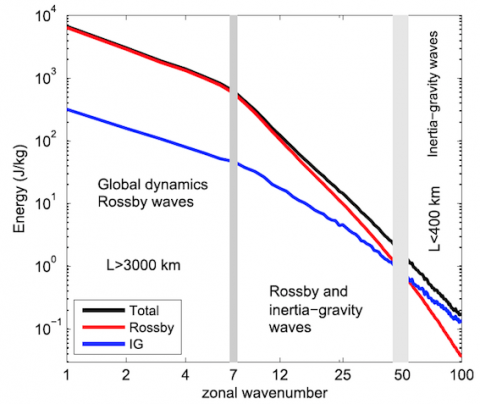
Our paper in Journal of Atmospehric sciences described the application of MODES to quantify temperature and wind perturbations associated with the IG waves in global analysis data.
Applied to the ECMWF interim reanalysis and the operational 2014–16 analysis fields, the method reveals the IG spectrum divided into three regimes: a part associated with the large-scale unbalanced circulations that has a slope close to -1 for zonal wavenumbers up to 6, a synoptic-scale range between 3000 and around 500 km that is characterized by a nearly -5/3 slope, and a mesoscale range below 500 km where the slope of the IG energy spectrum in the ECMWF 2015/16 analyses is steeper. In contrast, the energy spectrum of the Rossby waves has a -3 slope for all zonal wavenumbers k>6.
Figure shows 3 dynamical regimes in ERA Interim reanalyses.
Full paper is available at http://journals.ametsoc.org/doi/full/10.1175/JAS-D-16-0341.1